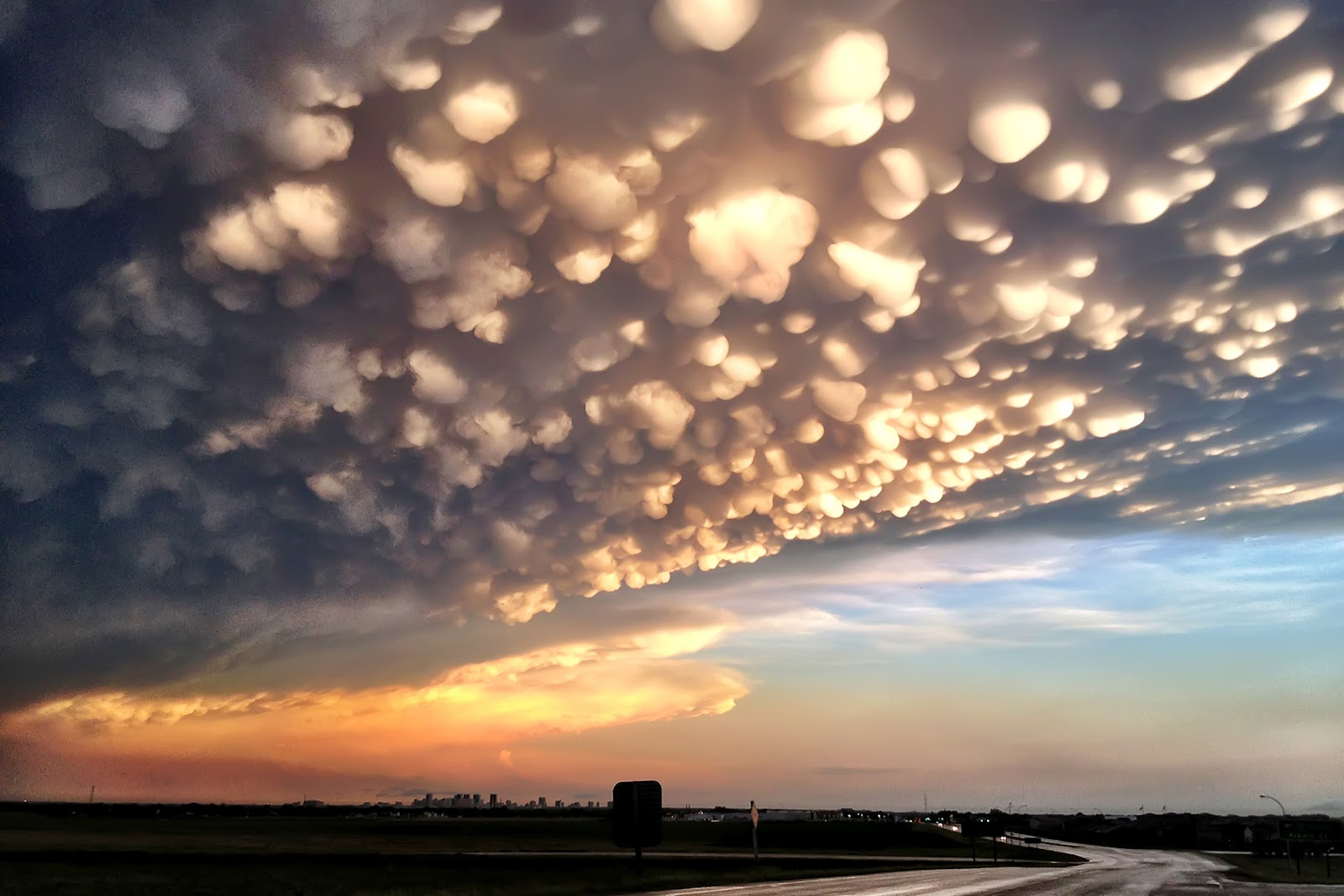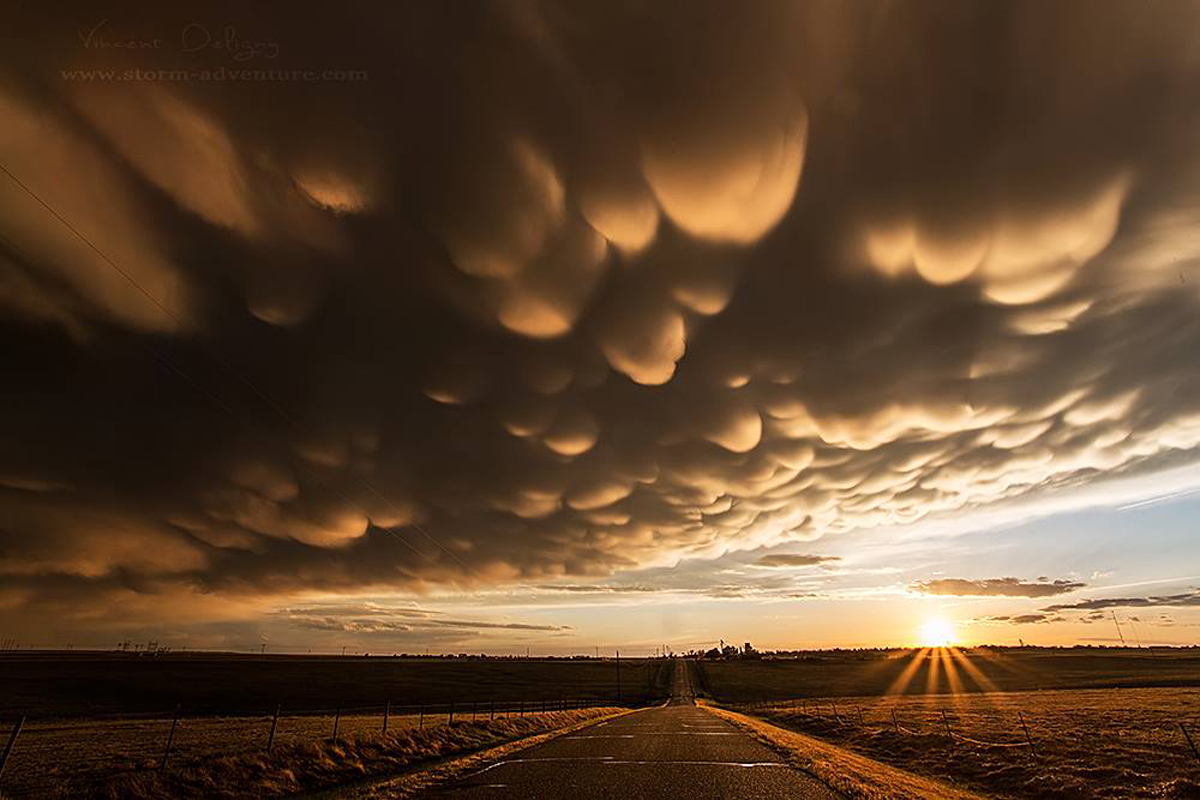Mammatus clouds are one of the most captivating atmospheric phenomena, showcasing nature's artistry in the sky. These unusual clouds often appear as bulging, pouch-like formations that hang from the base of a cloud, creating a striking visual display. In this article, we will explore the formation, characteristics, and significance of mammatus clouds, providing you with an in-depth understanding of this breathtaking meteorological occurrence.
The sighting of mammatus clouds can evoke a sense of wonder and curiosity among meteorology enthusiasts and casual observers alike. Their unique appearance is not only aesthetically pleasing but also indicative of specific weather conditions. Understanding mammatus clouds can enhance our appreciation for the complexities of the atmosphere and improve our ability to interpret weather patterns.
In the following sections, we will delve into the science behind mammatus clouds, their formation processes, the conditions that lead to their appearance, and their implications for weather forecasting. Let us embark on this journey to discover the beauty and significance of mammatus clouds in our sky.
Table of Contents
- What Are Mammatus Clouds?
- Formation of Mammatus Clouds
- Characteristics of Mammatus Clouds
- Weather Implications of Mammatus Clouds
- Famous Sightings of Mammatus Clouds
- Photography Tips for Capturing Mammatus Clouds
- Myths and Legends Surrounding Mammatus Clouds
- Conclusion
What Are Mammatus Clouds?
Mammatus clouds are distinctive cloud formations characterized by their pouch-like, bulbous protrusions that hang from the base of a parent cloud. The term "mammatus" is derived from the Latin word "mamma," meaning "udder" or "breast," due to their resemblance to these anatomical features. These clouds can vary in size and shape, often appearing as soft, rounded masses that create a striking contrast against the sky.
Types of Mammatus Clouds
While mammatus clouds are primarily classified based on their appearance, they can be further categorized into the following types:
- Low-Level Mammatus: These clouds typically form beneath cumulonimbus or other dense cloud systems at lower altitudes.
- High-Level Mammatus: These occur at higher altitudes, often associated with cirrus clouds.
Formation of Mammatus Clouds
The formation of mammatus clouds is closely linked to the processes that occur in the atmosphere during thunderstorms and severe weather events. They typically develop from the downdrafts of thunderstorm systems, where cool, moist air descends rapidly, causing instability in the atmosphere.
Key Factors in Formation
Several key factors contribute to the formation of mammatus clouds:
- Instability: The presence of warm, moist air rising into cooler layers leads to the creation of these unique clouds.
- Strong Downdrafts: As air descends rapidly, it causes the formation of pouch-like structures.
- Moisture Availability: Sufficient moisture in the atmosphere is essential for the development of these clouds.
Characteristics of Mammatus Clouds
Mammatus clouds are easily recognizable due to their distinct features. Here are some of the primary characteristics that define them:
- Appearance: Mammatus clouds appear as rounded, pouch-like structures that hang from the base of a cloud.
- Color: They often exhibit a range of colors, from white to gray and even shades of orange or yellow during sunrise or sunset.
- Texture: The surface of mammatus clouds can appear smooth or ruffled, adding to their visual appeal.
Weather Implications of Mammatus Clouds
The presence of mammatus clouds can be indicative of severe weather conditions. Their formation often occurs in the aftermath of thunderstorms and can signal an unstable atmosphere.
Associated Weather Patterns
While mammatus clouds themselves do not produce precipitation, they are often found in conjunction with other weather phenomena, including:
- Severe Thunderstorms: Mammatus clouds are commonly associated with strong thunderstorms and severe weather outbreaks.
- Potential Tornado Activity: Their presence may indicate the potential for tornado formation, although this is not always the case.
Famous Sightings of Mammatus Clouds
Mammatus clouds have been documented in various locations around the world, often capturing the attention of both meteorologists and photographers. Some notable sightings include:
- Colorado, USA: Known for its dramatic thunderstorms, Colorado frequently experiences mammatus cloud formations.
- Texas, USA: The vast skies of Texas provide an excellent backdrop for observing these clouds during stormy weather.
Photography Tips for Capturing Mammatus Clouds
For those interested in photographing mammatus clouds, here are some tips to help you capture their beauty:
- Timing: The best time to photograph mammatus clouds is during the golden hour, shortly after sunrise or before sunset.
- Composition: Use leading lines or other elements to frame the clouds in your composition.
- Camera Settings: Experiment with different settings to capture the texture and colors of the clouds effectively.
Myths and Legends Surrounding Mammatus Clouds
Mammatus clouds have inspired various myths and legends throughout history. Many cultures view these clouds as omens, often associating them with impending storms or significant weather changes.
Cultural Significance
In some cultures, mammatus clouds are seen as a sign of good fortune, while in others, they may be viewed with apprehension. Understanding these cultural perspectives can enrich our appreciation of mammatus clouds and their place in folklore.
Conclusion
In conclusion, mammatus clouds are a fascinating atmospheric phenomenon that captivates observers with their unique appearance and association with severe weather. By understanding their formation, characteristics, and implications, we can develop a greater appreciation for the complexities of our atmosphere. If you have ever witnessed the beauty of mammatus clouds, share your experiences in the comments below, and don't forget to explore more about the wonders of weather phenomena on our site.
We hope this article has provided you with valuable insights into the world of mammatus clouds. Stay curious and keep exploring the beauty of nature!
You Might Also Like
Jennifer Benson Austin: A Comprehensive Biography And Insight Into Her Life And CareerTamuCC Blackboard: A Comprehensive Guide To Online Learning Platform
Babe Ruth Died: The Legacy Of A Baseball Legend
Angie's Lobster: A Delectable Journey Into The World Of Lobster Cuisine
Siue Cougarnet: The Rising Star In The Digital World
Article Recommendations
- Michael Boulos Religion And Beliefs
- Jellybeanbrains Porn
- Aishah Sofey Porn
- Britneybabe11 Xxx
- Baby Suji
- Tina Trahan Age
- Jenna Ortega Sex Tape
- Movies4u South Hindi Dubbed
- Donald Trump Jr Kimberly Guilfoyle
- Bhad Bhabie Nude Leaks


